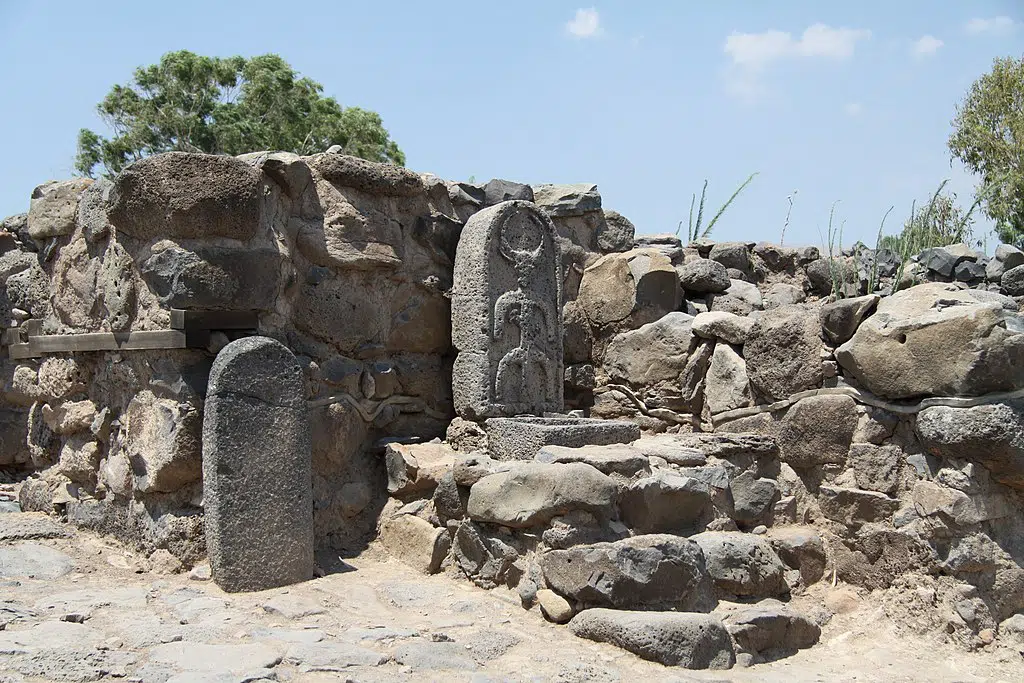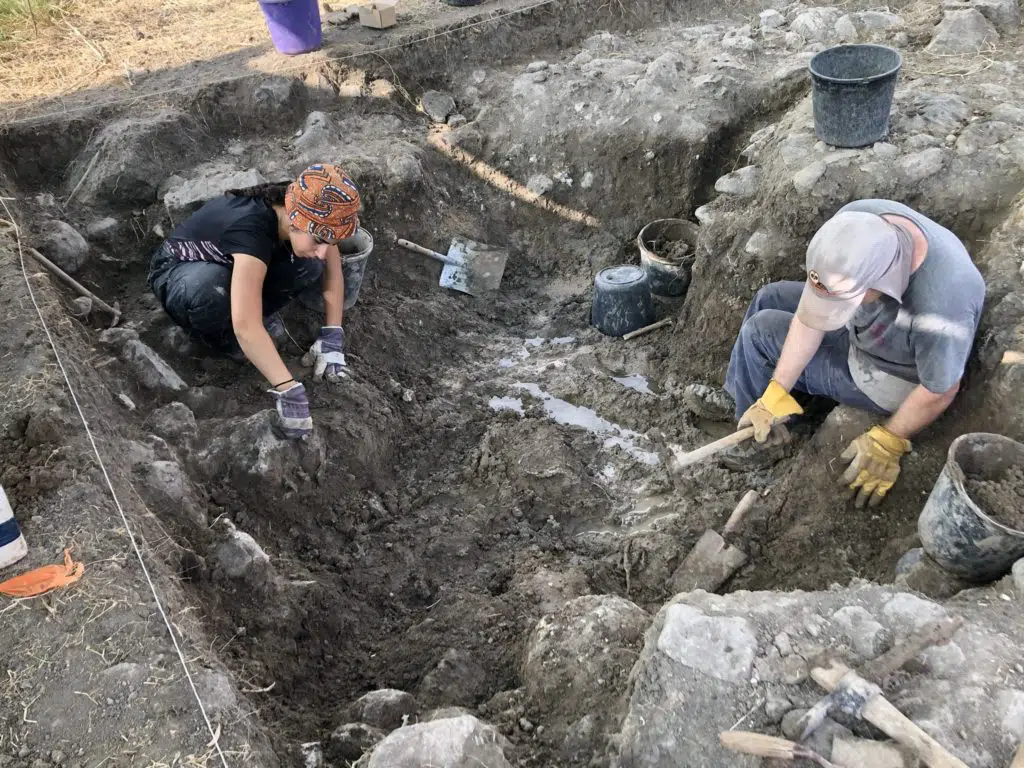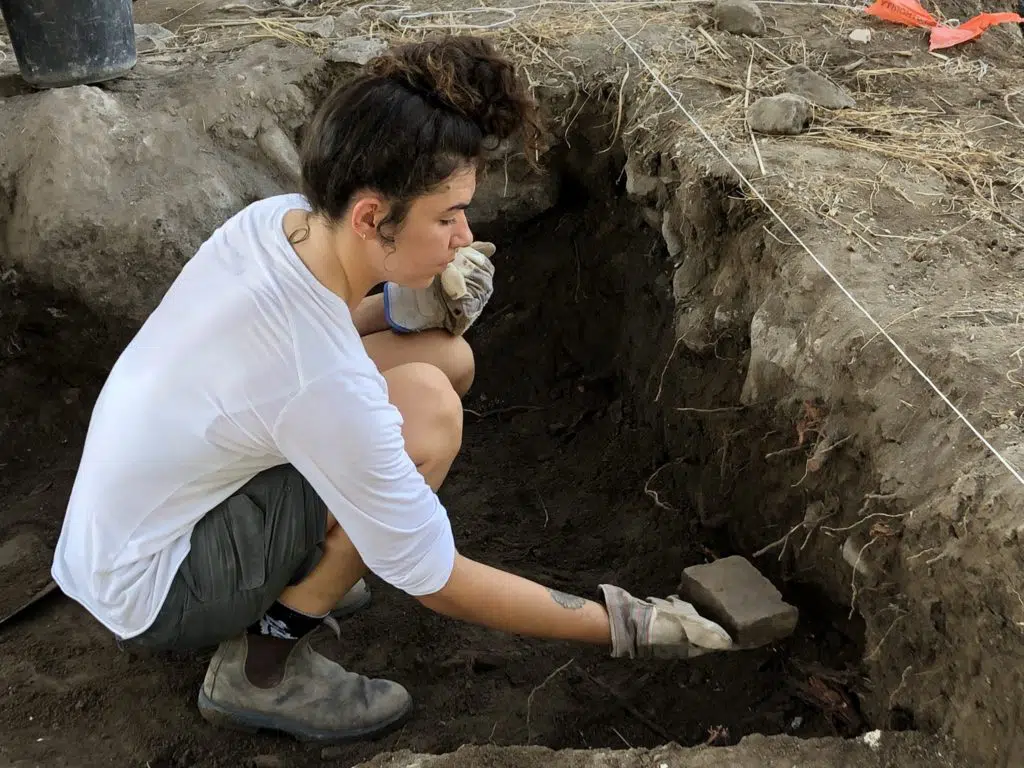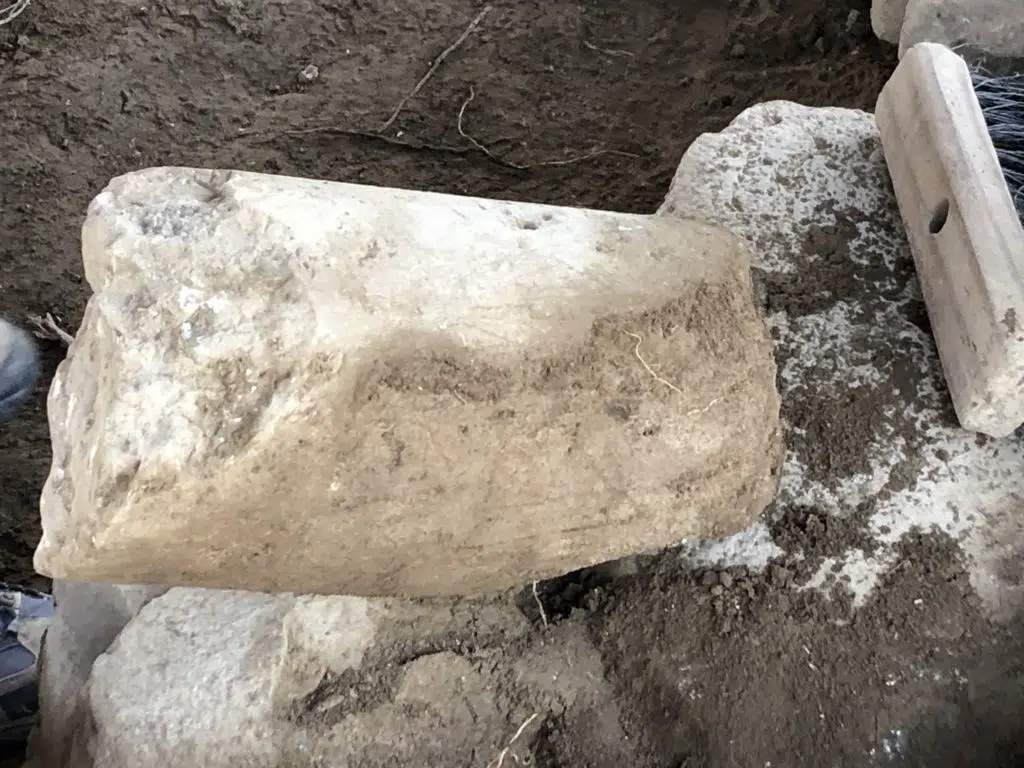
Israeli archaeologists recently found two areas which might have been part of the ancient city of Bethsaida, which was mentioned prominently in the Bible. A Byzantine church may be the missing link needed to establish one of them as the city where two apostles were born.
The areas have both Byzantine as well as Roman ruins from the eras through which the city flourished.
What the researchers call “Area A” at El-Araj has the remains of the southern, western, and northern walls of the Byzantine-era Church of the Apostles. Also in that same area are the remains from the Roman period of the city.
A small fishing village emerged at some point between the first century BC and the first century AD at the confluence of the Jordan River and the Sea of Galilee, prompting its settlers to name the place Bethsaida, or “house of hunting,” (fishing).

According to the historical record as written by the famed Roman/Jewish historian Josephus Flavius, the tetrarch Herod Philip gave the settlement the status of a polis, naming it Julias, in the year 30 or 31 AD. It was renamed Julias in honor of Julia Augusta of Rome’s royal family.
At about that time, tradition has it that two of Jesus Christ’s apostles, the brothers Andrew and Peter, lived there, as well as the apostle Philip. However, some time beginning in the third century, the historical record shows nothing at all regarding Bethsaida/Julias up until the fifth century.
The archaeological record shows that in the fifth century the Byzantines built a church in the town over what they believed to have been the home of the apostles. Somehow however, incredibly, the town was once again completely lost to the historical record after that point.
Nevertheless, that status may be changing, according to archaeologist R. Steven Notley of Nyack College in New York.

“Bethsaida is the last missing city of the Gospels,” he told interviewers from the Israeli newspaper Haaretz during a recent visit to the country. He and Mordechai Aviam of the Kinneret Academic College of the Galilee are both confident that they have found Bethsaida at El-Araj.
A place called “Et-Tell,” located just two km (1.25 miles) away, which was excavated for more than thirty years by another archaeologist, Rami Arav of the University of Nebraska at Omaha, may also be the long-lost Bethsaida.

Notley and Aviam excavated the El-Araj site in July. Unfortunately, some pits they had excavated in previous years there remain full of water from a sudden flooding of the Sea of Galilee.
Research teams from Kinneret College at that time excavated lakeside homes from the Roman period of the area; the fifth-century Byzantine church previously identified at the site was also the subject of this year’s dig, as students tried to get down to the level of its floor.
Aviam stated at the time that he was hoping to find an inscription in the church, which may even include the name of the bishop or benefactors who were behind the Byzantine church’s construction. Such information could be the missing link needed to certify that this indeed was the biblical city.

Both Aviam and Notley are placing a great degree of trust in the age-old tradition that the area where the church was founded was indeed the home of the apostles Peter, Andrew, and Philip.
The modern-day excavations of this area actually began with the construction of an Ottoman manse called Beit Habek (“House of the Bey”) in the 19th century during the period of Ottoman rule in the area.
It was known at the time to have been built by Abdul al-Rahman Baasha al-Yusuf, the local bey, on top of ancient ruins. The marshy, mosquito-infested land around that part of the lake was, at that time, farmed by local Jews.
In making his own digs at the site in 1930, the German priest Rudolf de Haas discovered an ancient mosaic two meters (six feet) below the level of the foundations of Beit Habek.

Unfortunately, the mansion and the surrounding area was shelled as a result of fighting between the Syrians and Israelis in 1955.
Notley explains that “What de Haas saw were the mosaic floors likely belonging to the Byzantine church (even though he mistakenly called them ‘Roman mosaics’).”
When he and Aviam began excavating this area back in 2016, they unearthed ornate gilded glass tesserae, which are typical of the glittering tiles used in Byzantine mosaics.
After the stunning discovery of the mosaic tiles, they subsequently found the walls of the church, which were recorded in the writings of a saint from the 8th century, Willibald (also called Willibrord).
Pilgrimage writings describe Bethsaida, point to El-Araj
Willibald wrote the “Hodoeporicon,” an itinerary of his pilgrimage to the Holy Land. He tells of walking from Capernaum (Kfar Nahum) to Chorazin (Kursi) via the Church of the Apostles in Bethsaida.
Dr. Achia Kohn-Tavor, a member of the Kinneret Institute for Galilean Archaeology, states definitely that “We have hard evidence,” establishing El-Araj as the site of the Biblical city. All Byzantine basilicas were oriented east-west, which is true of the one fond at the site, and the archaeologists have also found the bases of some of the church pillars, as well as what is left of its arcade and nave.
“The only part missing today is the east wall,” Kohn-Tavor declares, adding that the church had been average in size—approximately 15 meters (49 feet) wide. He and the other researchers have even found pieces of masonry with engraved crosses, some made of white marble that was imported from the Greek city of Marmara in Asia Minor of what is today Turkey.
Kohn-Tavor believes that there were other marble fixtures in the building, but unfortunately much of it may have been removed at a later time, even, tragically, burned to make lime.
Notley maintains that he is quite confident it is indeed the Church of the Apostles, based partly on Willibald’s writings as well as the fact that there is no other such major structure in the area.
Mud may make the difference in determining true identity of Bethsaida
In contrast, the other prospective site for Bethsaida, Et-Tell, is an Iron Age city which also may have been the capital of the biblical kingdom of Geshur. Notley and Aviam state that no Roman layer of ruins or later church have been found there.
The mud that even as we speak is sitting in the archeologists’ square digging holes in El-Araj from the latest flooding of the Sea of Galilee is the clue to their belief that this indeed is Bethsaida rather than the stony remains of Et-Tell.
In El-Araj, the site of the fishing village, there is a Roman layer of ruins going back to the first to third centuries AD. Above that is a layer of silt that measures an incredible two meters in depth.
On top of that are the remains of the Byzantine culture, with its church dating from the fifth to eighth centuries AD.
This begs the vital question of what is contained in that two meters of mud between the Roman ruins and the Byzantine ruins above.
The Roman ruins show beyond a doubt that a small polis, or city, had indeed been established there. The silt layer above it shows that from the third century, the water level in the lake sometimes rose, and the site was inundated, as was the case in 2020, with the same type of mud that is plaguing the archeologists at the site today.
Gap in historical record aligns with flooding event along shore of Galilee
Aviam explains the striations clearly show that “It was abandoned for 200 years, then it was resettled in the fifth century, until being abandoned once and for all in the eighth century.”
As noted previously, there are no historical records from the third to the fifth century regarding Bethsaida, and the Byzantine era saw the construction of the great church in the fifth century. Archeologists believe this clearly shows that the gap in the historical record is borne out by the geological record.
Indicating that the site was indeed a polis, the Roman layer below the Galilean mud includes the remains of a bathhouse, which was part of any decent-sized Roman settlement. That is the only large public building found at El-Araj thus far; however, archaeologists have unearthed private homes from that same Roman period.
In three separate areas where they dug around the site, they found not only pottery and coins but glassware and even fragments of beautifully-painted frescoes, according to Haaretz.
Only a small part of the fascinating site has been explored up until now, since researchers are focusing their efforts on finding the floor of the church. Other areas will be addressed as time and budgets allow.
“Not easy to have a better candidate”
The other site at Et-Tell may indeed have been, according to Arav, the capital of Geshur. However, Aviam argues that it was already in decline during the Roman period. Importantly, Et-Tell is not located along the shore, as any fishing village would have to be, but perched on a hill.
The Et-Tell site, like many areas of the Holy Land, does have Hellenistic-era remains, but of course, those were from 200 to 300 years earlier than the Roman ruins. By that time, the city there apparently went into decline.
Naturally, that would be diametrically opposed to being upgraded into a polis.
Notley adds in shoring up his theory that the Et-Tell site is “too far from the lake,” that fishing from Et-Tell would have to mean that the lake at that time was a few meters higher, and that would drown every settlement in Galilee.
Asked why the Israeli government recognized Et-Tell as Bethsaida, Aviam notes that when that was done in the 1990s, it was the only candidate for the distinction.
Arav, he added, was the one who “sold” the authorities on that being the actual city, and he was the one who challenged others to locate another, more likely site. Many believe that that is exactly what has now been done.
“It’s not easy to have a better candidate,” Aviam tells interviewers with a laugh. The scientific papers on the dig will be published soon.
Although Aviam and his team have not unearthed the rest of the polis, that may happen, and sooner rather than later.
As to the reason behind the Israeli government’s websites continuing to state that Et-Tell was the real Bethsaida when the issue is still being investigated, the Aviam excavation is just a few years old, so the government must wrap its head around the possibility that they need to change their statements and go with the newly-excavated site.
The Israeli Antiquities Authority has stated for the record that the issue does need to be revisited in the coming years, as the new excavations bring increasingly more evidence to light.
See all the latest news from Greece and the world at Greekreporter.com. Contact our newsroom to report an update or send your story, photos and videos. Follow GR on Google News and subscribe here to our daily email!



